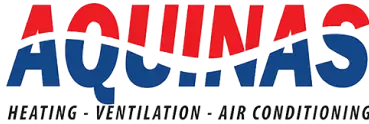7 Ways Apartment Owners Can Save Money on HVAC Repairs
Managing HVAC systems in apartment buildings can be costly, but strategic maintenance and planning can significantly reduce expenses. Below are practical ways apartment owners can cut costs on apartment HVAC repair while ensuring efficient operation.
1. Implement Preventive Maintenance
⏩ Quick Tip: Regular maintenance reduces emergency repair costs and extends system life.
Routine inspections and servicing help detect small issues before they escalate into costly repairs. Partnering with a multi-family HVAC services provider ensures seasonal tune-ups, filter changes, and system diagnostics are conducted on schedule. Studies show that preventive maintenance can lower HVAC repair costs by up to 40%. Additionally, regular maintenance can improve energy efficiency, helping reduce utility bills while maintaining tenant comfort. Establishing a maintenance schedule that includes quarterly inspections and immediate response to minor issues can prevent expensive system failures.
2. Upgrade to Energy-Efficient Systems
⏩ Quick Tip: Energy-efficient HVAC units reduce long-term repair and utility costs.
Older HVAC systems often require frequent repairs and consume more energy. Upgrading to high-efficiency multi-family air conditioning systems can reduce operating costs and improve tenant satisfaction. While the initial investment may seem high, modern HVAC units can cut energy consumption by up to 30%, leading to long-term savings. Federal and state incentives may also be available for property owners who upgrade to energy-efficient systems, providing additional financial benefits. Look for ENERGY STAR-rated units that meet high-efficiency standards and ensure proper installation to maximize benefits.
3. Use Smart Thermostats and Controls
⏩ Quick Tip: Smart thermostats prevent excessive wear by optimizing energy usage.
Installing programmable or smart thermostats helps regulate temperatures, preventing unnecessary strain on the HVAC system. Features like remote access, automated scheduling, and tenant-controlled settings reduce system overuse, leading to fewer repairs and lower utility bills. According to the U.S. Department of Energy, using programmable thermostats can save up to 10% annually on heating and cooling costs. Encourage tenants to use pre-set schedules to minimize excessive HVAC usage during unoccupied hours.
4. Seal and Insulate Ductwork
⏩ Quick Tip: Properly sealed ducts improve efficiency and prevent costly system strain.
Leaky ductwork forces HVAC systems to work harder, leading to premature wear and increased repair costs. Sealing and insulating ductwork can enhance efficiency by up to 20%, reducing strain on equipment and minimizing breakdowns. Conduct a professional duct inspection to identify leaks, and use mastic sealant or foil-backed tape to seal joints and connections. Proper insulation, especially in attics or crawl spaces, helps maintain consistent temperatures and reduces energy waste.
5. Train Maintenance Staff on HVAC Basics
⏩ Quick Tip: Educated staff can identify minor HVAC issues before they escalate.
Training maintenance staff on HVAC basics allows maintenance personnel to recognize warning signs such as unusual noises, inconsistent temperatures, and refrigerant leaks. Early detection prevents minor issues from turning into expensive emergency repairs. Providing staff with basic troubleshooting guidelines can help resolve minor issues in-house, reducing the need for service calls. Investing in HVAC training workshops or online courses can enhance their knowledge and efficiency.
6. Implement a Tenant Education Program
⏩ Quick Tip: Informed tenants contribute to HVAC longevity by avoiding misuse.
Temperature fluctuations in California make proper thermostat control essential for HVAC efficiency and longevity. Frequent adjustments, extreme settings, or improper use can increase energy costs and strain the system. Educating tenants on using thermostats correctly, keeping vents clear, and reporting issues early helps reduce unnecessary wear. Different thermostat models require unique settings, so providing simple usage guides can prevent confusion. Seasonal HVAC tips tailored to local microclimates and reminder stickers on thermostats can further improve efficiency, ensuring lower repair costs and longer system lifespan.
7. Work With a Reliable HVAC Service Provider
⏩ Quick Tip: Partnering with a trusted provider ensures cost-effective repairs and maintenance.
Having a dedicated HVAC contractor who specializes in multi-family air conditioning repair ensures quick response times, bulk service discounts, and expert solutions tailored to apartment buildings. Long-term partnerships often result in better pricing and more efficient service. When selecting an HVAC provider, look for companies with experience in HVAC for mixed-use buildings, positive customer reviews, and service agreements that include priority scheduling and emergency support. Establishing a long-term service contract can lead to cost savings and reliable system performance.
Final Thoughts
Managing apartment and mixed use HVAC systems require a proactive approach to minimize repair costs and maximize efficiency. By implementing preventive maintenance, investing in energy-efficient systems, educating tenants and staff, and working with reliable HVAC service providers, property owners can significantly reduce expenses while ensuring tenant comfort. Small changes in maintenance habits and system upgrades can lead to long-term savings and fewer unexpected breakdowns.

